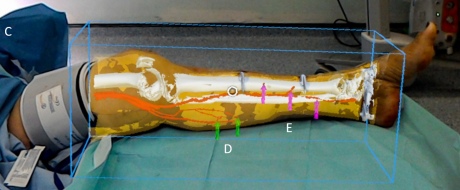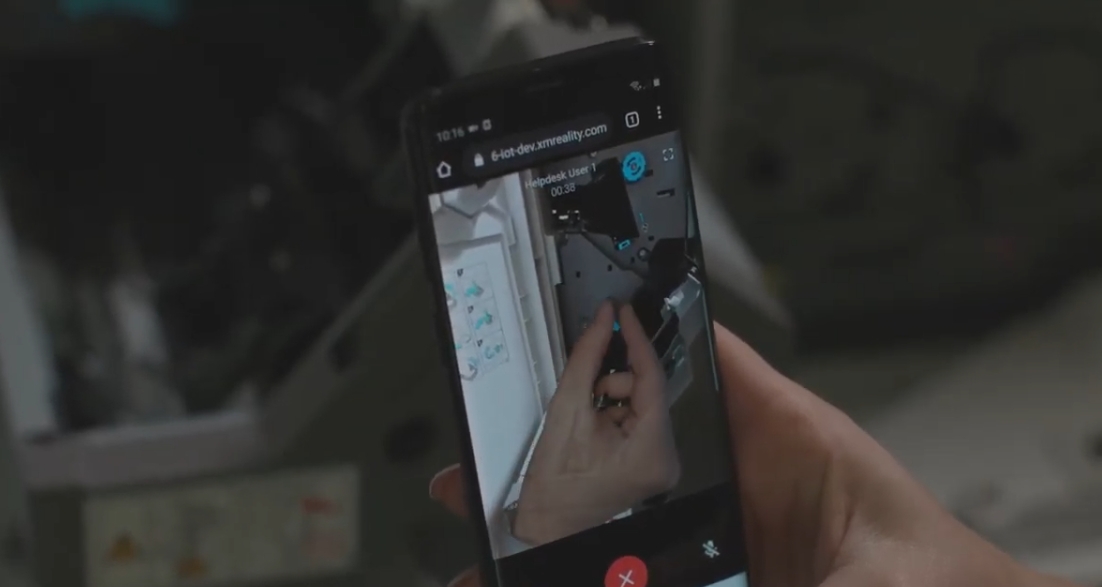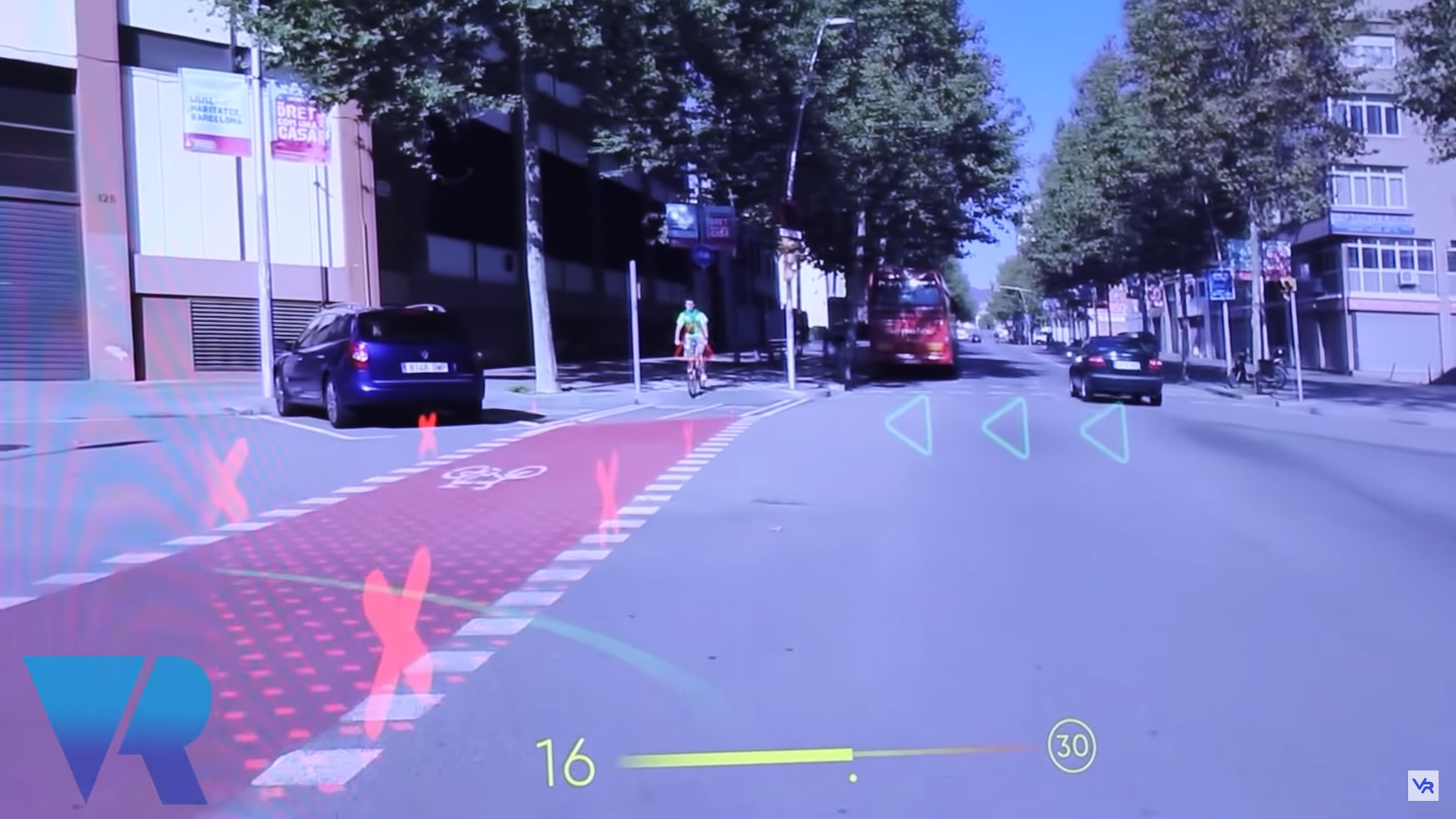Connected customer experience
Augmented Reality (AR)
Definition of Augmented Reality
Augmented Reality (AR) is the extension of the perceived real world by superimposed, computer-generated content, most importantly but not limited to visual content.
Important professional use cases include (games and entertainment are excluded here):
Documentation and visualization: Augmented reality allows a much tighter combination of the physical world with its associated information than printed documentation. For example, security information like no-touch areas can be superimposed on the physical object, and ‘Xray’-type images allow a look inside of closed objects. A special case of this is the usage of AR in retail (a flavor of so-called ‘immersive commerce’) by displaying retail items that are not physically present, like furniture in a room or eyewear on shopper’s faces.

Computer Tomography (CT) Images of a leg are superimposed over the actual leg, allowing more precise surgery (source)
Remote field support and training can be extended by augmented reality far beyond today’s collaboration tool abilities. For remote field support, experienced staff can guide personnel on the ground by showing AR renderings of e.g. their hands and very clearly visualizing necessary actions. For training on a machine, teachers and students can literally walk around the (virtual) machine and interact with it.

On-site personnel films a device with a cellphone. The remote support staff sees the video and superimposes his/her hand over it in real time, showing exactly which knob to turn (source)
Logistics: Navigation can be enhanced by augmented reality, the most obvious use case being vehicle navigation devices that overlay directions directly onto the real-life street view. Currently considered a ‘hot’ subject is indoor navigation (supported by 5G indoor location services).

Navigation instructions are visualized by a green line and green arrows. In addition, red warning markers highlight a cycle path and an approaching cyclist (source)
Complex AR use cases combine the above fundamental use cases in scenarios of high complexity, including war-time scenarios (AR use cases for the military abound) and emergency situations.
Technology evaluation
Relevance for IoT and integration
AR contributes to the growth of data belonging to an object, e.g., its AR visual representation, its AR-enabled instructions, etc. However, static content like this is not at the core of the IoT revolution. IoT is predominantly dealing with streams of event data, and with ‘digital twins’ which are ‘living’, changing digital representations of physical object instances, for example, including a machine’s current configuration, its maintenance history, etc.
So, visualizing a new chair in a living room is a good augmented reality use case, but not much of an IoT use case. The main capabilities of IoT come into play once the AR rendered object is connected with the IoT data of a physical object instance.
AR is not a major driver for IoT but emphasizes the fact that virtual things are also relevant things for IoT: they must be definable and (simulated) manageable just like for physical things. The seamless existence of real and virtual things in IoT finds its natural visual representation in AR.
Market - Current Adoption
In the past, both Augmented and Virtual Reality (VR) have heavily missed market growth expectations. VR can even be considered the epitome of a technology that failed to ‘cross the chasm’ to a mainstream product.
IDC still predicts a very healthy growth of the AR and VR market, despite the markets shrinking in 2022. But even if that very optimistic prediction is correct, the absolute numbers of AR headsets sold will not reach a level that makes it more than a niche product for a specific use case.
One reason is the unavailability of AR HMDs that most consumers would enjoy to wear. VR HMDs strive to maximize immersiveness, while augmented reality demands to keep perception of reality to a maximum, and to only selectively superimpose it. Only recently, attractive AR devices are on the horizon. To keep size and cost down, they are supported by high-end cellphones which act as processing, connectivity, and input device.
Market – Outlook
Many new technologies were driven by industrial applications first. But sometimes, it is the private sector that generates the required momentum. This might be the case for AR. Once private adoption of AR is high, that will have an influence back on commercial applications as well. If Apple's long-rumored headset does finally arrive and meet expectations, this could bring massive momentum to the market.
Software AG expects a growing use of AR, but no disruptive change. Companies can certainly be successful offering AR solutions with proven benefit, but expectations should be realistic and analyst predictions taken with caution.
Today, the use cases with the highest momentum are games and entertainment (not discussed here), retail (see above), and the military.
